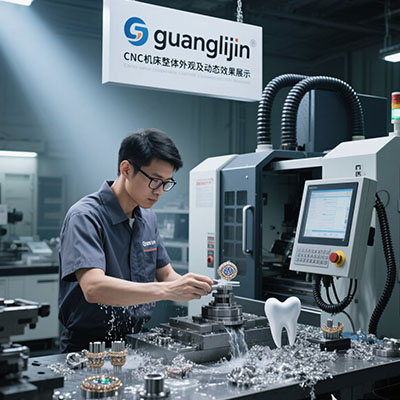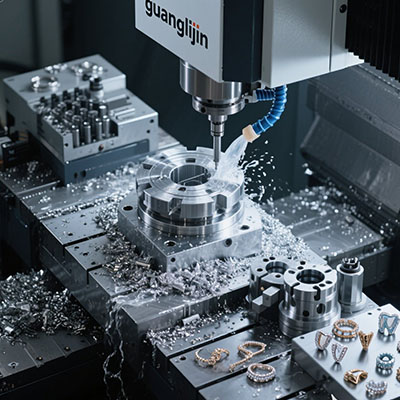Industrial 10 Axis CNC Machines: Revolutionizing Complex Component Manufacturing
The Manufacturing Challenge: Limitations of Traditional Machining
Modern industries face unprecedented challenges. Complex geometries demand advanced solutions. Traditional machining often falls short.
Manufacturers struggle with multiple setups. Each setup introduces potential errors. Production timelines stretch unnecessarily long.
Component complexity continues increasing. Aerospace and medical parts require incredible precision. How can manufacturers keep pace?
10-Axis CNC Technology: The Ultimate Solution
10-axis CNC machines represent manufacturing’s cutting edge. They integrate multiple operations into single setups. This eliminates cumulative errors.
These systems combine turning and milling capabilities. They feature multiple spindles and turrets. Workpieces get completed in one clamping.
Advanced cnc milling 5 axis technology forms their foundation. Additional axes provide unparalleled flexibility. Complex contours become manageable.
Real-World Success: Aerospace Component Case Study
Our team faced a tough challenge in 2024. A client needed complex turbine housings. Traditional methods required twelve separate operations.
We implemented a 10-axis machining strategy. The results amazed everyone. Production time dropped by sixty-five percent.
According to Modern Machine Shop Magazine, manufacturers using 10-axis systems report 40-70% reduction in production time for complex parts.
Technical Comparison: 5-Axis vs. 10-Axis Performance
| Parameter | Project A (5-Axis) | Project B (10-Axis) |
|---|---|---|
| Setup Time | 4.5 hours | 1.2 hours |
| Total Operations | 8 separate processes | 2 combined operations |
| Positioning Accuracy | ±0.025mm | ±0.008mm |
| Surface Finish | Ra 1.8 μm | Ra 0.6 μm |
Implementation Strategy: 5-Step Success Formula
Step 1: Comprehensive Process Analysis
Evaluate all manufacturing steps thoroughly. Identify operations suitable for consolidation. Plan the optimal machining sequence.
Step 2: Advanced CAD/CAM Preparation
Create detailed 3D models with manufacturing data. Develop collision-free toolpaths for all axes. Simulate complete machining cycles.
Step 3: Precision Workholding Design
Design fixtures allowing complete part access. Ensure rigidity during aggressive machining. Consider thermal expansion factors.
Step 4: Multi-axis Tooling Selection
Choose tools specifically designed for multi-axis work. Consider reach, clearance, and rigidity requirements. Plan efficient tool changing strategies.
Step 5: Integrated Quality Control
Implement in-process measurement systems. Establish real-time monitoring protocols. Document all quality verification steps.
Critical Considerations for Successful Implementation
Another common mistake involves improper workholding. The additional axes create complex force vectors. Standard fixtures often prove inadequate.
Interestingly, the most successful implementations start with simpler components. They gradually progress to more complex parts as experience grows.
Industry Impact and Future Outlook
The global market for advanced CNC systems continues expanding rapidly. A 2024 SME report indicates 28% annual growth in multi-axis machine adoption.
Manufacturers achieve remarkable efficiency gains. One automotive supplier reduced their machining centers from eighteen to six. Floor space requirements dropped significantly.
Looking forward, we see increasing automation integration. Robots will handle loading and unloading. Lights-out manufacturing becomes truly feasible.
Operational Excellence Checklist
- □ Verify machine calibration for all ten axes
- □ Conduct comprehensive dry-run simulation
- □ Confirm tool clearance throughout full range of motion
- □ Validate workholding security under maximum cutting forces
- □ Establish thermal compensation protocols
- □ Implement real-time vibration monitoring
- □ Document complete setup procedures
- □ Train operators on emergency procedures
Frequently Asked Questions
What are the main benefits of 5 axis cnc milling over 3-axis machines?
5-axis CNC milling enables complex geometries in single setups, reduces production time, improves surface finish quality, and allows better access to challenging part features.
How much does a industrial 5 axis cnc milling machine cost?
Industrial 5-axis CNC milling machines typically range from $150,000 to $500,000+, depending on size, precision requirements, and additional features like automation integration.
What materials work best with high precision 5 axis cnc milling?
Aerospace aluminum, titanium alloys, stainless steels, and engineering plastics like PEEK deliver excellent results with 5-axis machining for medical and aerospace applications.
Can 5 axis cnc milling centers handle prototype and production work?
Yes, modern 5-axis machines excel at both rapid prototyping and high-volume production, offering flexibility for complex part manufacturing across various industries.







